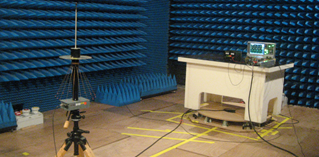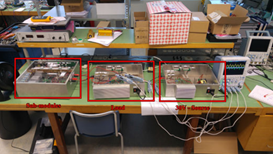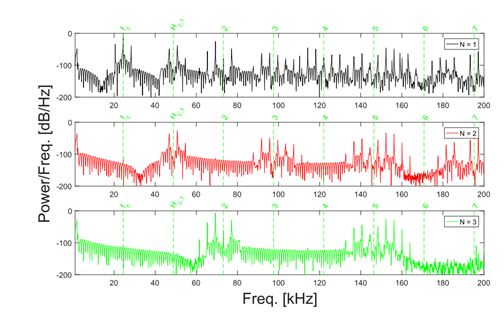
PROJECT SUMMARY
This project aims at developing a new architecture(s) that is based on the so-called Multi-functional Modular Multilevel Converter (M3C) and that enables direct power transmission from any particular source to any particular load with a reduced number of power converters. The concept is based on using different transmission frequencies in the same network. It enables the series connection of devices and can provide simultaneous functions such as power point tracking, individual load sharing and charge equalization. It offers the following features:
- Modular: All M3C modules are identical and can be individually programmed
- Potentially fast dynamic control, but complex dynamic behavior
- Can be used to interconnect with almost any low frequency AC or DC component
It solves the problem of uncontrolled power flow in networks and inherently improves stability. The project has 4 main research questions that are addressed by 4 research teams:
- What is the best architecture for the M3C and what is the best distributed filtering approach (TUD)
- Find the best way to control the distributed M3C converters in a network (IITB)
- How to avoid generation of EM noise arising from, amongst other, switching in series connected building blocks of the architecture. (UT)
- Find out the impact on individual load sharing, charge control and stability of the grid for the presence of different frequency currents in the grid and come up with best control algorithm to co-ordinate the converters to minimize the effect of different frequency currents. (IITD)
- Building a scaled proof-of-concept system is part of the project.
Measurements have been performed with different type of prototypes and in different environments to evaluate conducted (DM/CM) and radiated (E/B) EMI generated in fully operational systems as well as single submodules.


The status of the results that were obtained is summarized in the following section. The expected results, as stated in the project plan are first mentioned with the related publication(s) as a subcategory. For the publically accessible work a hyperlink is provided, while for ‘to be published’ work it will be added later.
UT:
- Full wave models of M3C components and module
- Behavioural circuit models for network simulation based on the full wave models
- Optimizing capacitor placement in EMI-filter using back annotation of 3D field coupling parameters in circuit models [2]
- Automated Equivalent Circuit Extraction of Impedance Curves Using a Gauss-Newton Algorithm [3]
- Experimental validation of the models
- Evaluation of Multichannel Synchronous Conducted TDEMI Measurements for High Voltage Power Electronics [4]
- Influence of Mutual Coupling on Parasitic Capacitance in Common Mode Chokes [5]
- Optimised filters using novel nano-crystalline materials
- EMI performance of the prototype
- Harmonic cancellation in a novel multilevel converter topology for the future smart grid[8]
- Estimation of Radiation Efficiency of GaN Half-bridge Based Submodule System for Radiated EMI [9]
- EMI Mitigation
The publication list provided here shows the results have been presented at three major conferences: EMC Europe, IEEE on EMC and APEMC. Less to the project related publications can be found at the university page of Niek Moonen.

Figure 1: The effect of stacking an N amount of submodules can be seen as it cancels harmonics within the system

Figure 2: Mathematical derived models of generated EMI from SPWM waveforms are compared to conducted measurements
[1] N. Moonen, F. Buesink, and F. Leferink, “Enhanced circuit simulation using mutual coupling parameters obtained via 3D field extraction,” in 2016 Asia-Pacific International Symposium on Electromagnetic Compatibility, APEMC 2016, 2016.
[2] N. Moonen, F. Buesink, and F. Leferink, “Optimizing capacitor placement in EMI-filter using back annotation of 3D field coupling parameters in circuit models,” in IEEE International Symposium on Electromagnetic Compatibility, 2016, vol. 2016–Novem.
[3] N. Moonen, J. L. Rotgerink, and F. Leferink, “Automated Equivalent Circuit Extraction of Impedance Curves Using a Gauss-Newton Algorithm,” in Asia-Pacific International Symposium on Electromagnetic Compatibility & Signal Integrity (APEMC), 2018, p. To be published.
[4] T. Hartman, N. Moonen, and F. Leferink, “Evaluation of Multichannel Synchronous Conducted TDEMI Measurements for High Voltage Power Electronics,” in 2018 International Symposium on Electromagnetic Compatibility - EMC EUROPE, 2018, p. to be published.
[5] N. Moonen, A. Roc, and F. Leferink, “Influence of Mutual Coupling on Parasitic Capacitance in Common Mode Chokes,” in Asia-Pacific International Symposium on Electromagnetic Compatibility & Signal Integrity (APEMC), 2018, p. To be published.
[6] N. Moonen, F. Buesink, and F. Leferink, “Unexpected poor performance of presumed high-quality power line filter, and how it improved,” IEEE Int. Symp. Electromagn. Compat., vol. 2015–Septm, pp. 382–385, 2015.
[7] N. Moonen, F. Buesink, and F. Leferink, “EMI Reduction in sPWM Driven SiC Converter Based on Carrier Frequency Selection,” 2017.
[8] N. Moonen, M. Gagic, F. Buesink, J. A. Ferreira, and F. Leferink, “Harmonic cancellation in a novel multilevel converter topology for the future smart grid,” in IEEE International Symposium on Electromagnetic Compatibility, 2017.
[9] C. Van Diemen, N. Moonen, and F. Leferink, “Estimation of Radiation Efficiency of GaN Half-bridge Based Submodule System for Radiated EMI Prediction,” in 2018 International Symposium on Electromagnetic Compatibility - EMC EUROPE, 2018, p. to be published.
[10] N. Moonen, F. Buesink, and F. Leferink, “Current Barriers to Confine High Frequency Common Mode Currents,” in 2016 International Symposium on Electromagnetic Compatibility - EMC EUROPE, 2016, vol. 2016–Novem, pp. 586–589.
[11] I. Setiawan, N. Moonen, F. Buesink, and F. Leferink, “Efficient magnetic field measurements,” in 2017 International Symposium on Electromagnetic Compatibility - EMC EUROPE 2017, EMC Europe 2017, 2017.
